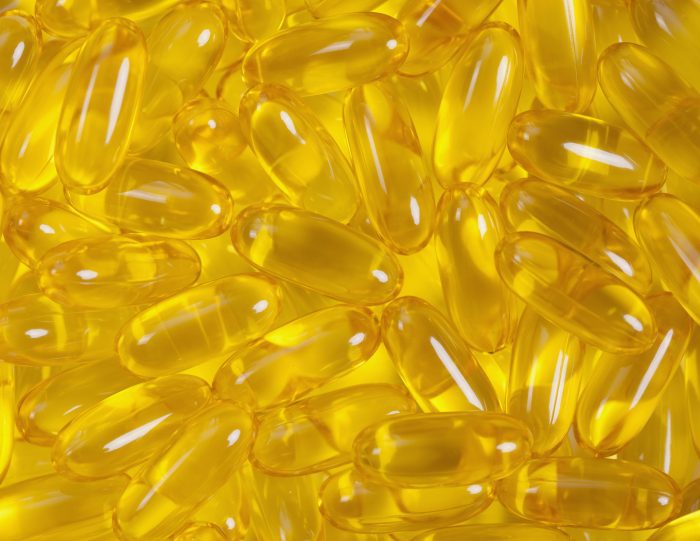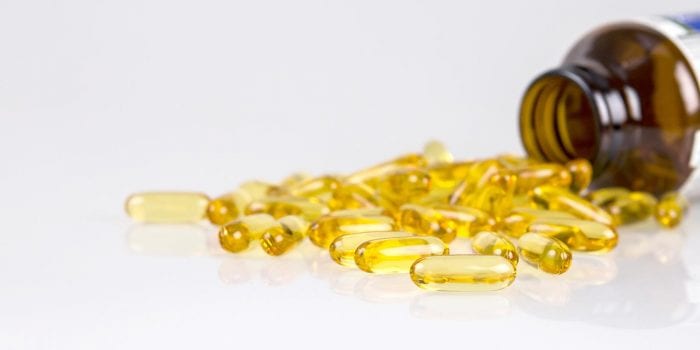Obesity can influence your body’s ability to use vitamin D
By David Dunaief, M.D.

Happy Spring! It’s been a rougher winter than in recent years, and the additional hours of sunshine each day seem even more welcome than usual.
The extra sunshine is also good news for your vitamin D3 levels. Realistically, though, it’s still challenging to get enough sun exposure to meet your vitamin D requirements without putting yourself at risk for developing skin cancer. Even without this concern, sun exposure doesn’t address all our vitamin D needs. In a study of Hawaiians, a subset of the study population with more than 20 hours of sun exposure without sunscreen per week still had some participants with low vitamin D3 values (1).
This is why many of us rely on food-sourced vitamin D from fortified packaged foods, where vitamin D3 has been added.
Why do we care about vitamin D? Studies have shown that it may be effective in preventing and treating a wide swath of chronic diseases. If you have low levels of vitamin D, replacing it is important. There’s still a lot we don’t know, though.
For example, there is no consensus on the ideal blood level for vitamin D. For adults, the Food and Nutrition Board (FNB) at the National Academies of Sciences, Engineering, and Medicine (formerly the Institute of Medicine (IOM)) recommends between 20 and 50 ng/ml (2). The Endocrine Society updated their testing and supplementation recommendations in 2024 to stratify them by age and pregnancy status, among other risk factors (3). Generally, however, they do not recommend testing vitamin D3 levels for healthy adults and defer to the IOM for supplementation recommendations.
How does body fat affect Vitamin D absorption?
Data from the VITAL trial, a large-scale vitamin D and Omega-3 trial, suggests that participants with BMIs of less than 25 kg/m2 had significant health benefits from supplementation versus placebo (4). These included 24 percent lower cancer incidence, 42 percent lower cancer mortality, and 22 percent lower incidence of autoimmune disease. Those with higher BMIs did not experience these benefits.
According to the National Institutes of Health (NIH), those with obesity issues might need greater intakes of vitamin D to achieve vitamin D levels similar to those of people with lower weights, because subcutaneous fat sequesters vitamin D, making it unavailable for their systems to use (2).
Does vitamin D improve cardiovascular health?
Several observational studies have shown benefits from vitamin D supplementation with cardiovascular disease. The Framingham Offspring Study showed that patients with deficient levels were at increased risk of cardiovascular disease (5).
In contrast, though, a small randomized controlled trial (RCT) questioned the cardioprotective effects of vitamin D (6). This study of postmenopausal women, using biomarkers such as endothelial function, inflammation or vascular stiffness, showed no difference between vitamin D treatment and placebo. The authors concluded there is no reason to give vitamin D for prevention of cardiovascular disease.
An NIH review of both observational and randomized clinical trials concluded that, even for those with low vitamin D levels, supplementation does not reduce cardiovascular disease risk (2).
How does vitamin D affect your weight?
There is moderately good news on the weight front. The Study of Osteoporotic Fractures found that vitamin D plays a role in reducing the amount of weight gain in women 65 years and older whose blood levels were more than 30 ng/ml (7).
This association held true at baseline and after 4.5 years of observation. If the women dropped below 30 ng/ml in this period, they were more likely to gain more weight, and they gained less if they kept levels above the target. There were 4,659 participants in the study. Unfortunately, sufficient vitamin D did not result in weight loss.
Does vitamin D supplementation reduce fracture risk?
The U.S. Preventive Services Task Force recommends against giving “healthy” postmenopausal women vitamin D, calcium or the combination of vitamin D3 400 IUs plus calcium 1,000 mg to prevent fractures, and it found inadequate evidence of fracture prevention at higher levels (8). The combination does not seem to reduce fractures, but it does increase the risk of kidney stones.
Should you supplement your vitamin D3?
While vitamin D may not be a cure-all, it might play a role with many disorders. It is important to supplement to optimal levels, especially since many of us living in the Northeast have insufficient to deficient levels. This is especially important for those with specific health issues that are affected by low vitamin D levels. However, it is important not to raise your blood levels too high (9). I advise my patients to target a range between 32 and 50 ng/ml, depending on their health circumstances.
References:
(1) J Endocrinology & Metabolism. 2007 Jun;92(6):2130-2135. (2) nih.gov. (3) JCEM, August 2024 (online June 2024). (4) JAMA Netw Open. 2023 Published online Jan 2023. (5) Circulation. 2008 Jan 29;117(4):503-511. (6) PLoS One. 2012;7(5):e36617. (7) J Clin Endocrinol Metabol. May 17, 2012 online. (8) JAMA. 2018;319(15):1592-1599. (9) Am J Lifestyle Med. 2021 Jul-Aug; 15(4): 397–401.
Dr. David Dunaief is a speaker, author and local lifestyle medicine physician focusing on the integration of medicine, nutrition, fitness and stress management. For further information, visit www.medicalcompassmd.com or consult your personal physician.







 I’ve always had trouble instituting New Year’s resolutions. Shortened daylight hours and colder weather make it sooooohhh difficult to get up early and exercise. I also instinctively look for starchy foods instead of fresh fruits and vegetables. Our pets face the same problems.
I’ve always had trouble instituting New Year’s resolutions. Shortened daylight hours and colder weather make it sooooohhh difficult to get up early and exercise. I also instinctively look for starchy foods instead of fresh fruits and vegetables. Our pets face the same problems.




